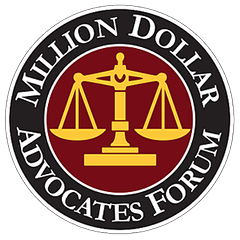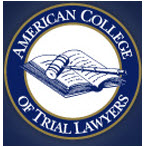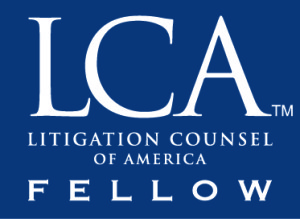
How Can You Prove Negligence in Your Injury Case?
When you have been injured, there are some steps that you can take to protect your rights for a later personal injury lawsuit, if necessary. The first thing that you should always do after you are injured is to look after your health by seeking immediate medical attention. Another great step is to collect useful evidence to back up your case. This leads us to a very important question: What proof do you need to show that another party was negligent in your accident?
The personal injury lawyers at Maggiano, DiGirolamo & Lizzi are top-rated in multiple areas of personal injury negligence. We handle a wide range of personal injury claims and have a wealth of knowledge and experience on the subject. If you’ve been injured and believe you have a claim, call (201) 585-9111 today for a FREE case evaluation.
Proving Negligence
In a negligence case, you must be able to ask yourself whether or not a defendant acted as a reasonable person would have, given the circumstances. If a child sues their parent, the jury will look at a reasonable parent and use them as an example. If a patient decides to sue their doctor, they will look at the standards a doctor must abide by in the medical community.
Proving a negligence case happens through direct evidence and circumstantial evidence. Direct evidence is that which is derived from personal knowledge of a witness or useful photographs. Circumstantial evidence, on the other hand, requires somebody to arrive at facts based on the evidence produced.
Depending on the type of case you have, negligence may be proven in a different way. For example, it is obvious that a dog bite case will be different than a medical malpractice case in many ways. And what happens in a case where you have little evidence? In a case of “res ipsa loquitur,” or “the thing speaks for itself,” a plaintiff can show that a defendant acted negligently without proof of misconduct. However, they must prove that the incident never would have happened without a negligent party or action.
Contact a Personal Injury Lawyer Today
Because proving personal injury negligence can sometimes be complicated, it is important to speak to an experienced attorney as soon as possible. At Maggiano, DiGirolamo & Lizzi, we will fight for your rightful compensation and help answer all of your important questions. Contact us today for a FREE evaluation of your case.
Frequently Asked Questions
What To Do After You’ve Been Injured?
If you have been injured, the most important thing is to prioritize your safety and health. In an emergency, call 911 or visit urgent care. If the injury isn’t life-threatening, you still need to see a doctor as soon as possible.
Once your injuries have been recorded and a treatment plan has been established, you can begin to think about personal injury negligence. It is essential to preserve your right to pursue compensation for your injuries. You can do this by:
Collecting Evidence
Take photos of injuries and the incident scene. Interview witnesses if you can, and take down their contact information. Keep all documents related to the incident. For instance:
- Medical bills
- Correspondence with police, insurance companies, and any other involved parties
- Proof of missed work & lost wages
- Receipts for prescriptions or medical equipment
Don’t forget to make copies of all paperwork you receive.
Keeping a Log of Events
Keep a journal of everything that happens. Write down your recollection of the incident. Make a log of your pain levels and treatments day by day. Record visits to the hospital or doctor’s office.
Filing Reports
Make sure that you file the appropriate reports with the police, insurance companies, your employers (if you were injured while at work), etc. Keep copies of all of these reports. Ensure you file them within the proper time limitations.
Contacting a Personal Injury Negligence Attorney
It is in your best interest to contact a personal injury lawyer if you suspect that negligence was involved in your injury. An experienced attorney can help to identify the responsible party or parties, gather evidence, meet deadlines, and pursue just compensation for your damages.
What Is Negligence?
According to the Cornell Law School Legal Information Institute, negligence is “a failure to behave with the level of care that someone of ordinary prudence would have exercised under the same circumstances.”
Personal injury negligence, therefore, involves an injury and damages caused by another party who failed to use reasonable judgment. Had they proceeded with care, they would have realized that their conduct could result in harm to another person.
What Are the 4 Elements Needed to Prove Negligence?
To prove negligence in a given situation, four elements must be present. These are:
1. Duty of Care
The defendant must have had a legal duty to the plaintiff. For instance, a doctor would owe their patient competent medical care, or a driver would be expected to show care for others on the road while operating a motor vehicle.
2. Breach of Duty
A duty of care was breached by the defendant’s actions or lack thereof. A breach involves acting or failing to act in the manner of a “reasonable person” given the known circumstances at the time of the incident.
3. Proof of Causation
The defendant’s negligence must be shown to be responsible for the injury to the plaintiff. There needs to be a direct causation between the negligent action (or lack thereof) and the damages.
4. Damages
There has to be an injury and monetary loss as a result of the defendant’s negligence. Those monetary losses are called damages. Not only would there need to be proof that there was an injury at all, but then, there would need to be proof of the monetary losses (medical bills, lost wages, pain & suffering, etc.) that were a consequence of that injury.
It is up to the plaintiff to prove all aspects of negligence in a personal injury claim. Fortunately, a knowledgeable personal injury lawyer can aid in collecting evidence and pursuing the appropriate compensation in your case.
What Is the Test of the Reasonable Person?
The “reasonable person” standard is often used to identify whether a defendant has breached a duty of care. At its simplest, it asks, “Would a reasonable person have acted in the same manner in a similar situation?” If a “reasonable person” would have behaved differently, the defendant is proven negligent.
The term was first used in the 1837 English tort case of Vaughan v. Menlove (per an essay in the Lewis & Clark Law Review). Mr. Menlove had been warned that he was stacking his hay in a dangerous manner. When that hay caught fire and burned his neighbor’s buildings, the court asked and answered whether Mr. Menlove was negligent. Given that he had been informed of the danger, they found that any “reasonable person” would have heeded the warning. Though this is known as the case in which the term emerged, the concept could date back to the very beginning of the 18th century.
What Are the 4 Examples of Negligence?
There are four different types of negligence. They are:
Gross Negligence
The most serious type of negligence, gross negligence shows a reckless disregard for the lives and well-being of others. This is worse than ordinary negligence “because of the person’s failure to exercise slight care or diligence.”
Contributory Negligence
Contributory negligence precludes a plaintiff from recovering any damages if they were even slightly negligent in an incident. Even if you are found to have a 1% involvement in the accident that caused your injury, you will not be able to pursue compensation.
Only a handful of states use this standard of negligence: Alabama, Maryland, North Carolina, and Virginia. The District of Columbia uses contributory negligence with some exceptions, and Indiana applies this rule to medical malpractice and claims involving the government.
Comparative Negligence
With comparative negligence, a plaintiff can be partially responsible in a negligence claim and still receive compensation for damages. The damages will be reduced by the degree to which the plaintiff was negligent. For instance, if you are assigned 15% of the fault, you would only receive 85% of your total losses. New York and New Jersey both use a comparative negligence standard.
Vicarious Negligence
This is also referred to as vicarious liability. This type of negligence is when a third party is held indirectly responsible for an incident. For instance, if a minor were to crash their parent’s car, the parent would be vicariously liable.
Vicarious negligence can also involve an employer’s liability in the actions of their employees. We frequently see this issue in truck accident claims where a trucking company is liable for the negligence of an employee (i.e., the driver of the truck).
What Is Direct Evidence?
Direct evidence proves a fact without inference or presumption or links a defendant directly to the fact at issue. This could be through eyewitness testimony, confession, expert opinion, physical evidence, documents, etc.
What Is Circumstantial Evidence?
Circumstantial evidence is also called indirect evidence. This type of evidence doesn’t prove the fact at issue without a certain amount of presumption. Circumstantial evidence can prove another fact but then requires a reasonable inference to support the fact at issue.
Circumstantial evidence is still legitimate, even though it doesn’t involve direct observation. An example of circumstantial evidence could be a witness who walked by a shopping market aisle and saw water spilled on the floor. They did not see the plaintiff slip & fall (direct evidence), but the court can infer that the spill the witness saw caused the slip that injured the plaintiff.


















